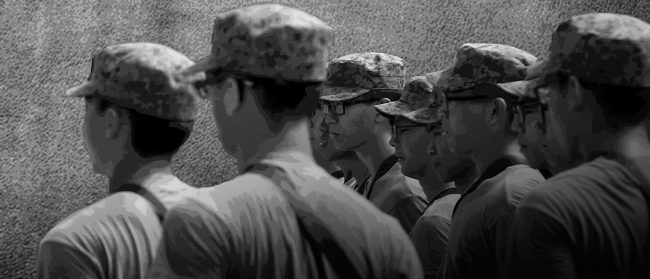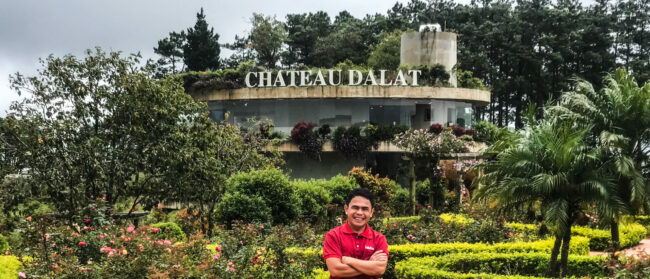“Since President Duterte came to power, police have unlawfully killed thousands of people, the vast majority of them from poor and marginalised communities, in attacks so extensive and brutal they may well amount to crimes against humanity.”
These striking words were spoken by Amnesty International’s director of Southeast Asia and the Pacific James Gomez in January 2018, in a statement condemning the president’s renewed drug war.
They mirror the human rights group’s conviction that Philippine President Rodrigo Duterte’s crackdown on illegal drugs is more a war on the poor than a war on drugs.
This stance is supported by a series of working papers written by academics at the Philippines’ Ateneo School of Government and De La Salle University. They offer an insight into the extent of Duterte’s bloody drugs crackdown, which according to human rights groups has claimed the lives of anywhere between 12,000 and 20,000 people.
The papers collected data on 5,021 people killed in the campaign and noted that “most of the victims were poor”. Their occupations ranged from tricycle drivers to construction workers to unemployed.
But at the end of May this year the president signed into law a bill that could mark the biggest policy shift in the fight against poverty for years.
Taking its name from the famous charter of rights between an unpopular English monarch and his people, the ambitious “Magna Carta of the Poor” seeks to cement the rights of the poor into law in the Philippines, and calls for a string of anti-poverty measures involving various ministries and government agencies. It is both far-reaching and complex in nature and, when looked at alongside Duterte’s strict drug policy, utterly contradictory.
“Optics wise, it does seem odd at the least, even hypocritical,” said Carlos H. Conde, a researcher for Human Rights Watch’s Asia division. “How can a government that targets the poor in a violent manner profess to uplift them from poverty, right?”
Hypocritical or not, Conde believes that it should not stop the government from trying to reduce poverty, which remains a huge issue in the country.
| Share of the population below the national poverty line. Source: Asian Development Bank Basic Statistics 2019 | |
| Myanmar | 32.1% (2015) |
| Laos | 23.2% (2012) |
| The Philippines | 21.6% (2015) |
| Cambodia | 14.0% (2014) |
| Indonesia | 9.8% (2018) |
| Thailand | 7.9% (2017) |
| Vietnam | 5.8% (2016) |
| Malaysia | 0.4% (2016) |
| Brunei | No data |
| Singapore | No data |
A study by Asian Development Bank (ADP) recorded the Philippines’ poverty rate at 21.6% of the population in 2015, making it the third worst in the region behind only Myanmar and Laos.
The World Bank cites factors such as vulnerability to natural disasters, an underdeveloped agriculture sector and high population growth as key drivers of poverty.
The “Magna Carta of the Poor,” officially known as Republic Act 11291, seeks to change that.
It highlights five key areas that must be improved in order to break the poverty cycle for thousands of families: food, employment, housing, health and education. Each of these will fall under the responsibility of different government ministries or agencies, which will all be held accountable by the National Anti-Poverty Commission (NAPC).
The first step will be for the NAPC to draw up an Implementing Rules and Regulations document, which will include a mechanism for monitoring the progress and work of the different ministries and government agencies. The timeframe for finalising that is six months from when the law was signed, which was on the 12 April 2019.

The law also states that government ministries should prioritise spending on anti-poverty measures.
This marks out the law as being unique from previous bills, according to Dennis Blanco, assistant professor at the Department of Political Science in the University of the Philippines Diliman.
And he said that while there is a “conflictual relationship” between the law and Duterte’s drug policy, alignment and harmony are possible. He believes that the Magna Carta of the Poor could actually serve as social protection for the “poor and downtrodden sectors of society” affected by the drug crackdown.
At the heart of the law is the idea that the government should work to connect ministries, agencies, organisations and the people who need support the most. It opens with the declaration that “it is likewise vital that the State complies with its international obligations to end poverty in all its forms, ensure and promote the health and well-being of all.”
While Blanco said the law was a welcome step, it is far from a new concept.
The act was first brought to the table as a bill in 2013 but was tossed out by then-President Benigno Aquino III.
He said in a statement at the time that it “suffered from substantial infirmities” and would “wreak havoc on government’s existing planned programmes for the poor”.
He added, “the proposed bill mandates a funding mechanism that is, or may very well be, at cross-purposes with the necessary funding for existing pro-poor government programmes.”
The new iteration of the bill that Duterte signed into law addresses Aquino’s concerns by using a system of progressive realisation, meaning any anti-poverty measures will be paced and implemented according to available funds.
Christopher Sabal, the media and PR unit head for the NAPC, denied that this could cause complacency or a lack or urgency within the ministries and agencies implicit in the law. He said it was about “setting the right expectations for everyone that we don’t have unlimited resources to fix the problem”.
According to Sabal, the difference between 2013 and today is partly the financial state of the country, but also because Duterte understands that the government must act now to tackle the poverty issue.

Despite his bloody reputation on the world stage, the law echoes much of Duterte’s previous domestic policies. In 2017 he issued an executive order to offer free contraceptives to women in need, and his large-scale infrastructure push known as the ‘build, build, build’ programme could help to stimulate the economy, provide jobs and lower poverty incidence. The government has a goal of reducing the rate of poverty to 14% by the year 2022.
And alongside Duterte is former president Gloria Macapagal Arroyo, who last year was appointed as the speaker of the House of Representatives. In 2008 she introduced the Pantawid Pamilyang Pilipino Program, or 4ps programme.
It is a conditional cash transfer programme in which the country’s poorest families receive modest financial aid for their children, providing they follow certain stipulations such as attending school. The World Bank cited it as one of the reasons for the poverty rate in the Philippines dropping between 2006 to 2015.
Blanco posits that the new Magna Carta of the Poor could be linked to Arroyo wanting to extend her legacy of fighting against poverty and Duterte’s desire to improve his strained relationship with Western powers.
“This Magna Carta of the Poor is one way of…trying to cleanse the image of the president in light of several controversial policies such as the war on drugs and lowering the age of criminal responsibility,” Blanco said.
Lending the law more political credibility is the fact that its principal sponsor and author in the upper house was senator Leila de Lima. She is widely considered to be one of Duterte’s harshest and most outspoken critics, and is currently in prison on drug charges which she denies and claims are politically motivated. She said in an interview with Al Jazeera earlier this year that she was unlikely to be released while Duterte was still in power. But on this law, their opinions seem to align.
“The creation of the Magna Carta of the Poor is an express message to the poor and underprivileged that they are not overlooked, forgotten and consigned to oblivion,” de Lima said in a statement.
But despite support for the law crossing distant political poles, there are still many dissenting voices, most of which centre on the vague language of the law.
Perhaps the most damning voice is that of Leody de Guzman, who is the chairman of the labour group Bukluran ng Manggagawang Pilipino. He slammed the law in a statement, saying that “despite its overarching scope, RA 11291 is a classic case of doublespeak. Its ambiguity only highlights its deafening silence on the factors that contributed to poverty.”
Jeromie Lanit is the emergency coordinator for Care Philippines, the local branch of an international humanitarian organisation. Through his work he is often at the heart of the country’s battle against poverty. When Southeast Asia Globe spoke with him on the phone, he was in Marawi city, which in 2017 was captured by ISIS-linked terrorists before being liberated at devastating cost by the Philippine armed forces.

He hadn’t received much information about the law other than from newspapers and news websites, but when asked about the bill passing into law he said it was a welcome development – though he pondered how it would be implemented.
“Once [the law] is being rolled down from the regional to the provincial to the municipal or village level, that’s where the challenges occur,” he said.
And when asked about local governments’ effectiveness, he sighed. Not all of them, he stressed, but a lot of them were corrupt and focused more on structural rehabilitation, such as rebuilding roads or government buildings, rather than prioritising the people.
“A full recovery can only be realised if you address the root cause, which is [supporting the] people affected.”
Conde from Human Rights Watch shared his concern.
“In the end, this all boils down to enforcement,” he said. “The Philippines is notorious for having so many good laws that are not implemented well for various reasons… We can only hope that this proves to be the exception.”
Regarding the contradictions it poses to the drug war, he took a broader perspective.
“The ‘drug war’ will end at some point; poverty will probably remain a little while longer.”


